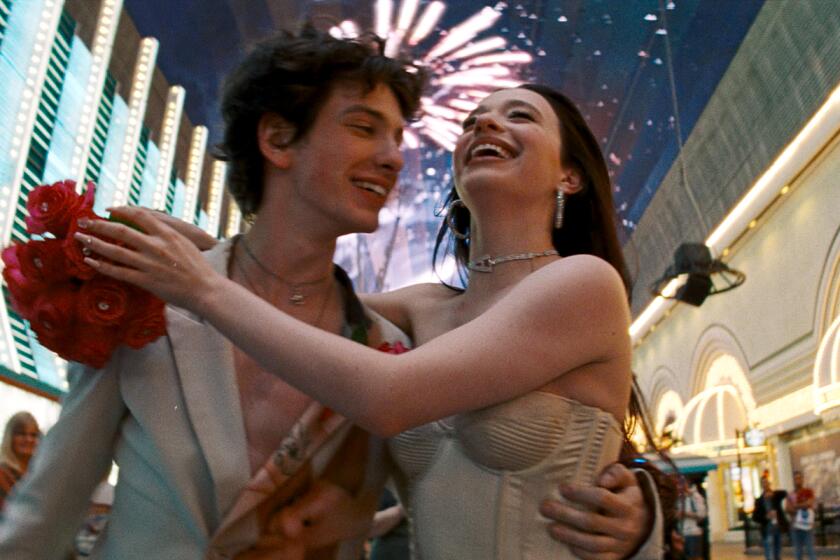Mahler, to stir the soul
- Share via
SAN FRANCISCO — Michael Tilson Thomas began his project of recording Mahler’s symphonies and song cycles on Sept. 12, 2001. On a day when performing groups all over the country were canceling shows, the San Francisco Symphony didn’t. Instead, Tilson Thomas tackled Mahler’s Sixth Symphony, called the “Tragic,” with a horrifying brutality and, in the slow movement, a cathartic calm that daringly confronted the horror of the hour. A live recording of that concert began what has thus far proved to be the post-9/11 Mahler cycle.
Now, with the rapturous heights reached in Tilson Thomas’ performance of Mahler’s magnificent Eighth on Friday night in Davies Symphony Hall, a great cycle has, incredibly, become greater.
Called “Symphony of a Thousand” because it requires a huge orchestra, multiple choruses squeezed on and around a stage and eight vocal soloists, the Eighth is, for a Mahler fanatic, the most ecstatic expression of joy in all music. Tilson Thomas’ unforgettably exalted Eighth performance was not, however, the legal psychedelic drug the extravagant score can sometimes seem. This symphonic tablet of LSD came with a warning label: There can be no heaven without hell, no bliss without suffering.
The importance of Tilson Thomas’ interpretation was to stress this profound ambivalence. He had no hesitation about unleashing tsunami-scaled waves of soul-stirring sound. But an overriding sense of yearning served as constant reminder that such glory is an impossible vision, vivid beyond belief but always out of reach.
But first there was the blastoff. The organ hit its massive E-major chord, the massed choruses thundered “Veni, veni, creator spiritus” (Come, come, creator spirit), a great many trumpets and trombones blazed, and we were off. Mahler was ahead of his time in many ways. In 1907, when he completed this overwhelming work, human flight was in its infancy, but the composer began his irrepressible symphony with what still feels like a rocket launch. At the climactic end of the hymn, euphoric rising scales in the choruses can produce a giddy sensation of weightlessness in a listener if, as was the case Friday, the performance has just the right degree of lift.
The second and much longer part of the symphony is a setting of the final scene of Goethe’s “Faust,” with its many levels of blessed angels flying about and doing their best to try to raise humanity up a notch. But Mahler -- who had already upped the ante of symphonic angst to historic heights and would do so all the more in his Ninth Symphony and the parts of his 10th he lived to write -- could hardly be expected to put all worries behind him.
A surprising amount of this massive symphony approaches quiet chamber music, and Mahler as always wrings absorbing expression from solo clarinet or solo violin. What makes the Eighth so extraordinary is the sheer force of will it took him to overcome his innate sense of tragedy and imagine a better world. So, when he finally clamps onto the vision, it takes over all his senses.
Tilson Thomas, who is 61, has lost whatever bit of Hollywood he had in him. He is beginning to gray and appeared intently serious Friday. Massive though his forces were, he conducted without a baton, and his gestures were unusually restrained. And yet I have never seen him demonstrate more power on the podium.
He brought out everything that it seems humanly possible to bring out in the Eighth, including the smallest details. But it was the vastness of scale that most impressed. In a mere 80 minutes, he covered the range of experience, from the most painfully private, intimate and personal expression to that of massed, unthinking bliss, from agony to ecstasy. He was a master of time, able to linger or accelerate at will without ever losing momentum.
After 11 seasons with Tilson Thomas, the San Francisco Symphony has become a richly communicative and secure Mahler orchestra. The San Francisco Symphony Chorus, the Pacific Boychoir and the San Francisco Girls Chorus were thrilling. The soloists, for the most part, were not, although Stephanie Blythe made up for some of her weaker colleagues with a deep mezzo-soprano that felt braced to the earth.
Still, Mahler’s Eighth must always be much more than the sum of its parts, and on this special occasion it was. Even with better soloists, I cannot imagine a more moving performance. Apparently, however, the San Francisco Symphony can. It will wait until the 2008-09 season to make a recording.
More to Read
The biggest entertainment stories
Get our big stories about Hollywood, film, television, music, arts, culture and more right in your inbox as soon as they publish.
You may occasionally receive promotional content from the Los Angeles Times.











